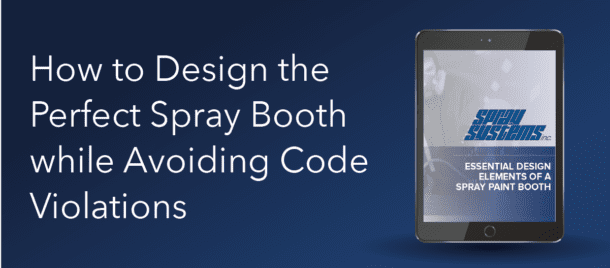The production of air pollutants is an unfortunate side effect of various manufacturing and industrial processes, including many types of spray and finish applications. Without the proper filtration and containment system in place, the release of pollutants can have devastating consequences on human health, as well as the local environment. These hazards are the chief reasons for the creation and enforcement of the National Emission Standards for Hazardous Air Pollutants(NESHAP) in the U.S.
Summary
- The EPA established NESHAP during the passage of the Clean Air Act of 1970 and is measured against exceptional members of the industry who excel in sustainability practices.
- Anyone utilizing hexavalent chrome is impacted by NESHAP regulations, but those regulations are industry-specific, so automotive facilities must be different minimum requirements than, say, an aerospace facility.
- The EPA is the governing body of NESHAP and should be contacted with any questions regarding specific industry regulations and what chemical compounds qualify as HAPs.
- In order to maximize efficiency and reduce external contaminants, advanced spray booth manufacturers like Spray Systems utilize control systems that help with regulation and pollution.
- Failure to comply with NESHAP can result in criminal charges, so a careful overview of a company’s processes and compliance regularly is incredibly important.
NESHAP Basics
NESHAP regulations were instituted with the passage of the Clean Air Act in 1970, which establishes specific sustainability targets with a set minimum amount. These targets are derived from members of the industry who demonstrate exceptional sustainability practices. This ensures that the goals are realistic so they won’t become a significant hindrance for companies seeking compliance. Currently, the application and accountability of these standards are administered by the Environmental Protection Agency (EPA).
Who Do These Regulations Impact?
Anyone spraying an aircraft primer that contains hexavalent chrome is subject to NESHAP requirements, as well as other paint booth regulations. Target Pollutant Ranges are determined on an industry basis, so an automotive facility may be subject to different minimums than an aerospace company. Business owners should contact a local Environmental Protection Agency (EPA) office to submit key information regarding their operations and check if any NESHAP rules may apply.
HAP Concerns for Spray and Finish Processes
There are many types of chemical compounds used in spray and finish processes that qualify as hazardous air pollutants (HAPs). The EPA maintains a growing list of HAP chemicals on its website so booth operators can compare it to the ingredients of their compounds. Paint stripping substances containing methylene chloride as well as sprays composed of plastic or metal-air toxins are just a few examples of potential HAPs used in spray booths.
Control Technology for Spray Booths
In the context of air pollution, the term “control technology” refers to virtually any means of reducing the output of pollutants into the environment. Control technology can take many different forms, ranging from the installation of a filtration system in the spray booth to catch pollutant particles to reducing the total usage of toxic compounds in the coating process through efficient practices. Ensuring employees are fully trained to safely and efficiently use the equipment is also considered to be a form of control technology.
Advanced spray booth manufacturers, like Spray Systems, incorporate various types of control technology into spray booths to maximize efficiency for operators. Some booths can be equipped with filters that allow recirculation, cutting down on costs and increasing sustainability at the same time. Advanced filtration systems with a 98 percent capture rate are generally required for any kind of spray and finish booths using HAPs.
Ensuring NESHAP Compliance
The best way for operators to make sure they are complying with all applicable EPA regulations is to carefully analyze their processes and submit relevant information to the EPA when making queries. Getting this information before shopping for a spray booth is much easier and more cost-effective than retrofitting after they are installed. Operators also need to follow current EPA guidelines for measuring the efficiency of their booth filters and documenting employee certification when filing routine submissions.
Complying with NESHAP rules isn’t just a matter of avoiding paperwork or minor fees. The provisions of the Clean Air Act define a direct violation as a criminal act, which means those responsible could face serious legal consequences. Operators are encouraged to embrace sustainable practices in order to comply with NESHAP and to seek opportunities to improve their overall efficiency and limit the health risks in their workplace.
If your spray booth doesn’t meet NESHAP regulations and it’s time to repair or replace, reach out to us. Our team of spray system experts will work with you to make sure your facility and spray booth are up to code and compliant with all regulations that pertain to your specific industry.

